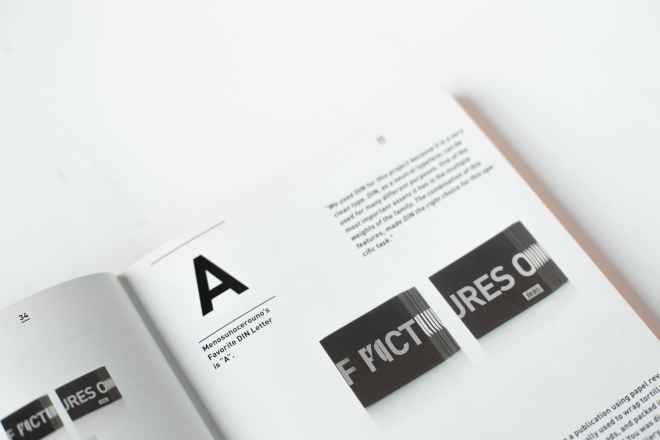How do different paper sizes work? Maybe you’ve seen paper marked as “A4” or “B5”. These labels are part of standardized paper sizing systems that simplify printing, manufacturing and design. Learning how different paper sizes work can help you make sure your graphic design projects fit the right paper size and look great after printing.
What Are the Different Paper Sizes?
When you see different paper sizes, you might notice they are often labeled with a combination of letters and numbers, such as A6 or B4. These codes are part of internationally standardized paper sizing systems, specifically the ISO 216 standards.
These standard sizes allow many manufacturers to make paper products that are compatible with one another and familiar to customers. For instance, one company could make a B5 compatible binder while a different company makes B5 size paper and both could rest assured that customers could use the two products together.
What are the different paper sizes, though? How do they work?
A Series Sizes
The first group of internationally standardized paper sizes is the A size range. The A sizes run A0 to A10. They’re determined by the height and width of a single sheet of paper. Each size has the same proportions but different measurements. Since this is an international standard, sizes are calculated in metric millimeters.
A sizes start with the A0, which is 841 x 1189 millimeters. The A1 size is a piece of A0 paper folded in half to make two sheets that each measure 594 x 841 millimeters.
The A2 size is a piece of A1 paper folded in half, and so on down to A10 size. A good rule of thumb is that as the number after the A label gets larger, the paper size gets smaller. So, a sheet of A5 paper is smaller than a sheet of A4 paper.
A4, A5 and A6 are the most commonly used A series paper sizes.
B Series Sizes
The B series of paper sizes is like half sizes in footwear. It was designed to add a wider array of paper sizes by creating sheets that are between standard A sizes. So, as a general rule, B sizes fall between the two nearest A sizes numerically.
For example, one sheet of B5 paper will be slightly larger than a sheet of A5 paper but slightly smaller than a sheet of A4 paper. B sizes run a bit larger than A sizes of the same number. So, a sheet of B5 paper will be larger than a sheet of A5 paper.
B sizes are most popular in European and Asian regions, so North American consumers are often not familiar with them.
B sizing gets somewhat complicated with Japanese stationery in particular. Japan uses their own version of the B size series that doesn’t exactly match the ISO standard B size measurements. Japanese B size papers are slightly larger, often denoted with the label “semi”, such as semi-B5.
As a result of the slight international differences in the B size range, B size stationery can vary from one product to another. However, it is generally all close in size. If you need B size paper to fit precisely, such as for a binder or envelope, always double check the exact measurements of a specific product.
C Series Sizes
The C series size range is not actually for paper, but rather for envelopes. So, if you are looking for different paper sizes and encounter a C size label, be aware that the product is actually an envelope.
Conveniently, C size envelopes are made for corresponding A size sheets of paper. For instance, if you want to mail a piece of A5 paper, it will always fit in a C5 size envelope.
North American Sizes
The paper size most people are familiar with is US letter size. This is one of four standard paper sizes used mainly in North America. The closest international standard size is A4, although the two sizes are not the same.
US letter size paper is slightly shorter and wider than A4 paper. Sometimes this doesn’t matter. However, if you’re printing something, it can make a difference since some content could get cut off if printed on the wrong paper size.
In addition to US letter, the North American paper sizes also include junior legal, legal and ledger. Junior legal size paper is slightly smaller than letter size while legal size is slightly larger. Ledger paper, also known as “tabloid”, is larger than legal size.
Uses for Different Paper Sizes
What do you use different paper sizes for? Each standard size has popular uses. For example, A4, A5, B5 and A6 are all commonly used in school and office stationery. A4 or US letter size is standard for folders and larger notebooks while A6 and B5 are both popular for smaller notebooks.
Among the North American paper sizes, letter size is the standard for most folders and notebooks as well as print materials like small posters or flyers. Ledger or tabloid size paper, measuring 11 x 17 inches, is popular for medium sized posters, such as business flyers or local event ads.
A3, A4 and A5 sizes are popular for small and medium sized paper goods, such as books, cards, calendars and magazines. The smallest A series sizes, A6 through A10, are used for things like pocket sized notebooks, photos, labels or stickers.
How to Choose the Right Paper Size
The complex standards behind different paper sizes may sound complicated. However, choosing the right paper size really comes down to your end user. Do they need to carry the paper product with them, like a pocket notebook? Or is the paper product going to stay in one place, like a poster?
Taking some time to think about these questions can help you select the right paper size. Remember, both A and B series sizes get larger as their number gets smaller.


